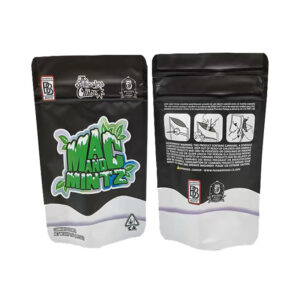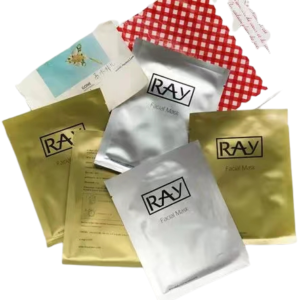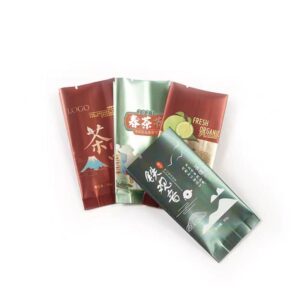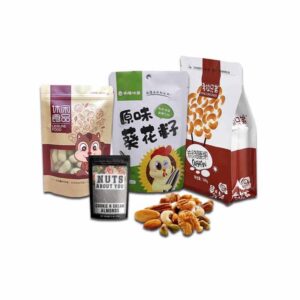Child resistant bag
child-resistant bags provide a higher level of security and protection than regular bags, making them an important tool for promoting safety in households with young children.
Additional information
| color | black, white |
|---|---|
| size | Refer to the data in the product details below |
| description | child resistant bag with special zipper |
| valve | no degassing valve |
| stock | YES |
Product details
A child-resistant bag is a type of packaging designed to prevent young children from accessing potentially harmful substances. These bags are made with materials that are difficult for children to open, such as special zippers or closures that require a certain level of dexterity or strength to open. They are typically used to store products such as medications, cleaning products, and chemicals that could pose a danger if ingested or inhaled by children.
The idea behind child-resistant packaging is to provide an extra layer of safety for households with young children, who are naturally curious and may be tempted to explore their surroundings by putting objects in their mouths or noses. Child-resistant bags are not completely foolproof, but they are designed to be more difficult for children to open than traditional packaging, which can help prevent accidental poisoning or injury.
It's worth noting that child-resistant bags should still be stored out of reach of children, and that adult supervision is always recommended when handling potentially dangerous substances.
| Item# | Stock Dimension (cm) |
Thickness (mm) |
| 1g | 9.5*11.+2.5 | 0.24 |
| 1/8 oz | 9.5*1.5+2.5 | 0.24 |
| 1/4 oz | 10*18+2.5 | 0.24 |
| 1/2 oz | 13*21.5+3.5 | 0.24 |
| 1oz | 15*25+4 | 0.24 |
| n.a | 30.5*22.8+5 | 0.24 |
What is the benefits of child resistant bag?
The benefits of child-resistant bags are primarily related to safety. Here are some of the main benefits:
- Prevents accidental ingestion: Child-resistant bags are designed to be difficult for young children to open, which can help prevent accidental ingestion of harmful substances such as medications or cleaning products.
- Reduces the risk of poisoning: By making it harder for children to access potentially toxic substances, child-resistant bags can help reduce the risk of accidental poisoning.
- Increases peace of mind: For parents and caregivers, knowing that potentially dangerous substances are stored in child-resistant bags can provide an extra layer of peace of mind.
- Complies with regulations: In many countries, child-resistant packaging is required by law for certain types of products. Using child-resistant bags can help ensure compliance with these regulations.
- Versatile: Child-resistant bags can be used to store a wide variety of products, including medications, cleaning products, chemicals, and more.
Overall, child-resistant bags can help prevent accidents and protect children from harm, which makes them an important tool for promoting safety in households with young children.
How about the material of child resistant bag?
Child-resistant bags can be made from a variety of materials, depending on the specific needs and requirements of the product being stored. Here are some common materials used to make child-resistant bags:
- Polyethylene: Polyethylene is a type of plastic that is often used to make child-resistant bags. It is durable, flexible, and resistant to punctures and tears.
- Aluminum foil: Aluminum foil is a common material used in child-resistant packaging for medications and other products. It is strong, moisture-resistant, and can be easily formed into different shapes.
- Nylon: Nylon is a synthetic material that is often used to make child-resistant bags for products such as cleaning solutions and chemicals. It is durable and resistant to tears and punctures.
- Kraft paper: Kraft paper is a type of paper that is often used to make child-resistant bags for products such as food and pet food. It is strong and resistant to tearing, and can be coated with a layer of plastic or wax to make it more durable and moisture-resistant.
- PET: PET, or polyethylene terephthalate, is a type of plastic that is commonly used in child-resistant packaging for products such as vitamins and supplements. It is strong, lightweight, and resistant to moisture.
The choice of material depends on various factors, such as the type of product being stored, the level of protection required, and any regulatory requirements that must be met.
What industry the child resistant bag used for?
Child-resistant bags are used in a wide range of industries where it is necessary to store potentially hazardous substances or products. Here are some of the industries where child-resistant bags are commonly used:
- Pharmaceuticals: Child-resistant bags are often used to store prescription medications and over-the-counter drugs that could be harmful if ingested by young children.
- Chemicals: Child-resistant bags are also used to store chemicals, such as cleaning products and pesticides, which could pose a danger if ingested or inhaled.
- Food: Child-resistant bags are sometimes used to store foods or supplements that could be harmful if ingested in large quantities, such as vitamins or herbal supplements.
- Cosmetics: Child-resistant bags can be used to store cosmetic products, such as nail polish remover, that contain potentially harmful chemicals.
- E-cigarettes: Child-resistant bags are sometimes used to store e-cigarette liquids, which contain nicotine and other chemicals that could be dangerous if ingested by children.
Overall, child-resistant bags are used in any industry where it is necessary to store products that could be harmful if accessed by young children. The use of child-resistant bags helps to prevent accidental ingestion and promote safety.
What is the feature of Child resistant bag?
Child-resistant bags have several features that make them effective at preventing young children from accessing potentially harmful substances. Here are some of the key features of child-resistant bags:
Special closures: Child-resistant bags often have closures that are designed to be difficult for young children to open, such as zippers with safety locks or child-resistant sliders.
Barrier protection: Child-resistant bags are often made with materials that provide a barrier against moisture, light, and air to help protect the contents from degradation and maintain their efficacy.
Durable construction: Child-resistant bags are typically made with materials that are strong and resistant to punctures and tears, to help prevent accidental exposure to the contents.
Clear labeling: Child-resistant bags often feature clear labeling that indicates the product's contents and instructions for use, as well as warnings and safety information.
Regulatory compliance: Child-resistant bags must comply with regulatory standards that specify requirements for the level of child resistance, as well as testing and certification procedCures.
Overall, child-resistant bags are designed to be a secure and effective way to store potentially hazardous products, while also providing clear labeling and compliance with regulatory standards.
Do you have child resistant bag stock for small quantity request?
Yes. Here are many stock sizes of child resistant bag. Black color is the most popular.
What is the difference between common bag types and child resistant bag?
The main difference between common bag types and child-resistant bags is the level of security and protection they provide. Here are some of the key differences:
- Security: Child-resistant bags are specifically designed to be difficult for young children to open, with closures and mechanisms that require more dexterity and strength than regular bags. This provides an additional level of security for products that may be harmful if ingested by young children.
- Material: Child-resistant bags are often made from stronger and more durable materials than regular bags, to prevent accidental exposure to the contents. They may also be made from materials that provide a barrier against moisture, light, and air, to help preserve the efficacy of the contents.
- Labeling: Child-resistant bags often feature clear labeling that provides information about the contents and instructions for use, as well as warnings and safety information. This is important for products that may be harmful if used improperly or if ingested accidentally.
- Regulatory compliance: Child-resistant bags must comply with regulatory standards that specify requirements for the level of child resistance, as well as testing and certification procedures. This ensures that the bags provide a consistent level of protection across different products and industries.
Overall, child-resistant bags provide a higher level of security and protection than regular bags, making them an important tool for promoting safety in households with young children.





